AI Knows You’re Burned Out Before You Do
- 3 Oct 2025
- 6 mins read
- Posted in
Content
- The Shift From Reaction to Prevention
- How AI Spots Burnout Before You Notice It
- 5 Early Burnout Signals AI Can Help Detect
- AI vs Traditional Detection
- Real-World Examples
- How AI Reduces Stress, Not Just Measures It
- A Word on Ethics and Privacy
- What This Means for Freelancers & Distributed Teams
Burnout rarely arrives like a thunderclap. It builds slowly, invisibly like a leaky tap behind the walls of our work lives. By the time most people recognise it, they’re already deep in the weeds of emotional fatigue, cynicism, and reduced productivity. But what if technology could flag the warning signs before that point? What if the systems we already use every day could act like early-warning radars, helping prevent burnout from happening in the first place?
That’s no longer science fiction. Across sectors, AI is increasingly being used to identify the subtle, accumulating signs of burnout not just for permanent staff, but across the growing freelance and distributed workforce too. And when used responsibly, these systems can help reduce workload, balance expectations, and allow people to rest and recover before things get critical. This isn’t about replacing therapists or human care; it’s about giving people the signals and support they need to avoid burnout altogether.
The Shift From Reaction to Prevention
Much of the early buzz around AI and mental health focused on reactive solutions. Think of AI-powered chatbots trying to emulate therapy sessions, apps that check in on your emotional state, or journaling tools that offer feedback based on what you've typed. While these concepts sparked interest, they often emerge too late in the burnout cycle after someone is already under significant strain and shouldn’t be relied on over human care.
We believe AI's real value lies in its potential to intervene before it gets to that point. Rather than relying on artificial tools to step in as a support system when someone is already overwhelmed, AI should serve as a preventative measure, a quiet signal in the background that helps guide both individuals and organisations toward better habits and timely rest.
When used in this proactive way, AI becomes part of a sustainable system of care, not a substitute for it.
How AI Spots Burnout Before You Notice It
AI is particularly well-suited to detecting burnout because it excels at pattern recognition. It can sift through massive amounts of behavioural data to flag anomalies that might indicate stress or fatigue. For instance, AI models can track whether someone is sending a high volume of emails outside normal work hours, participating less in team chats, or skipping scheduled leave. Even the way we type and respond in tools like Slack or Microsoft Teams can be revealing.
Take the example of after-hours communication. AI tools integrated with Slack can monitor when messages are being sent and received. A consistent uptick in late-night replies might indicate that someone is feeling pressure to stay online. Similarly, data from HR tools can show whether someone isn’t taking their allocated leave or repeatedly cancelling holidays. And when it comes to calendars, AI can highlight when an employee is booked in back-to-back meetings with no breaks.
In some cases, AI can also analyse engagement levels in messaging platforms. Short, less expressive messages with fewer emojis or reactions might not mean much in isolation, but when paired with other signals like meeting withdrawal or calendar overload, they begin to paint a picture of someone becoming disengaged or overwhelmed.
5 Early Burnout Signals AI Can Help Detect
- After-Hours Activity
An increase in emails, messages, or logins outside of standard working hours can indicate a blurring of work-life boundaries, a common precursor to burnout. - Skipped Breaks or PTO
Patterns of skipping lunch, not using vacation days, or regularly postponing time off are strong indicators of someone who feels they can't step away. - Calendar Overload
AI can detect back-to-back meetings, long workdays without breaks, or too many overlapping deadlines, signaling unsustainable scheduling. - Reduced Communication Quality
Short, terse messages, fewer emojis or reactions, and slower reply times may suggest emotional fatigue or disengagement. - Withdrawal from Team Engagement
Declining participation in meetings, fewer camera-on moments, or lack of contribution in collaborative platforms may show early detachment.
AI vs Traditional Detection
In traditional settings, burnout often goes unnoticed until it's too late. Managers might only realise someone is struggling after a major performance dip, a missed deadline, or an emotional outburst. But burnout rarely shows up all at once; it's the result of many small signals accumulating over time.
AI systems can identify behavioural changes earlier because they aren’t reliant on visible breakdowns or performance slumps. They operate on trends and anomalies, not instincts.
Of course, this isn't about removing the human element. It's about equipping leaders and HR teams with better tools to see around the corner, to understand what their teams might not be saying out loud.
Real-World Examples
Neuronify, for example, is a platform that integrates with collaboration tools like Slack to analyse communication patterns and calendar usage. They claim to detect burnout risks up to 45 days in advance, by tracking engagement levels and flagging unusual patterns like excessive after-hours activity, sudden communication drops, or long periods of back-to-back meetings (source).
Another example is TeamToggle, which looks at leave and workload data to highlight when employees stop taking holidays. It turns out that unused PTO is a strong indicator of someone feeling overwhelmed or undervalued. Their system proactively notifies managers when these patterns emerge, prompting timely check-ins and adjustments (source).
In the healthcare world, the BROWNIE Study is using wearable technology to detect burnout in nurses. By combining physiological data like sleep quality and heart rate variability with administrative data such as shift patterns and patient loads, researchers are building models that can predict emotional exhaustion long before it becomes dangerous. It's a powerful case study for AI-driven healthtech in one of the most demanding industries (source).
How AI Reduces Stress, Not Just Measures It
The most exciting part of this shift is that AI isn't just passively observing, it can actively help lighten the load.
AI systems can recommend changes to calendars when they detect meeting overload, nudging users to insert breaks or flag days that are too full. Workload analytics can show when a particular team member is taking on too much compared to their peers, allowing managers to redistribute tasks. Some tools even offer smart nudges encouraging employees to take a proper lunch break or reminding them to log off at a reasonable hour (source).
Automation also plays a major role. By using AI to streamline repetitive tasks from timesheet approvals to status updates, organisations can free people up to focus on meaningful work. This reduces mental fatigue, which is a major driver of burnout (source).
When these tools are used well, they don’t feel like monitoring; they feel like support!
A Word on Ethics and Privacy
Of course, with great power comes great responsibility. If used poorly, predictive wellness systems can feel invasive, even punitive. It's crucial to design these systems with empathy and ethics at the core.
Transparency is key. Employees must be informed about what data is being collected, how it’s analysed, and what will be done with the insights. It’s also essential to prioritise metadata over message content. For example, analysing when and how often people send messages is often enough there's no need to read the actual content.
Anonymisation also helps build trust. Where possible, systems should highlight trends at the team level, not just focus on individuals. And when risk signals do arise, the response should always be human. AI can flag an issue, but it’s a manager’s job to step in with empathy and care.
It's also important to be aware of bias. Not all workers engage with tools in the same way. For example, freelancers might work odd hours due to different time zones, not necessarily because they're overworked. AI systems must be calibrated to understand these differences.
What This Means for Freelancers & Distributed Teams
When it comes to freelancers and remote workers, the topic of burnout detection becomes even more layered. These individuals often work without the day-to-day support structures that in-house employees may rely on, like regular check-ins, HR visibility, or team camaraderie. And because freelancers often work irregular hours or juggle multiple clients, signs of fatigue can be even harder to spot. What looks like healthy flexibility might actually be a symptom of overwork — and without direct visibility, those signals are easy to miss.
AI tools might appear to offer a solution here, monitoring workload trends, spotting unusual activity patterns, or even nudging users toward better habits. But the idea of AI "watching" work behaviour, even with good intentions, can feel uneasy.
For some, early alerts and prompts might offer a safety net. For others, especially independent contractors or freelancers, it could feel like an intrusion into how they choose to manage their time. That’s why any use of AI in this space needs to be implemented with nuance, consent, and above all, a clear purpose: to make work less stressful, not more.
It’s important to remember that AI isn’t the fix for mental health. It can’t and shouldn’t try to offer emotional support or act as a surrogate for real conversations. What it can do is flag when someone might be at risk and help managers, teams, and organisations respond in time. And for freelancers in particular, this human response matters. Adding small but meaningful touchpoints, like creating a customised AI-powered feedback questionnaire to track progress and sentiment, scheduling monthly check-ins, or sending out regular wellbeing surveys, can offer visibility and support without being overbearing.
If you're interested in finding out more about making freelancer management simpler, check out the 10 best freelancer management software (FMS).
So rather than offering a definitive answer, this is an invitation to reflect. Would you use AI to spot stress in your team?
There’s no single right answer. But the way we approach these questions now will shape how we work in the years to come. Because the best wellness programme is the one that ensures you never need it in the first place.
Emma Reid
Tags
Speak to us to find out how we can simplify your contractor management
Related articles

31 Game-Changing AI Marketing Tools for 2025
Discover 31 game-changing AI marketing tools – from automation to personalization, these tools will revolutionize your campaigns and boost efficiency.

Why Businesses Should Invest in AI or Risk Getting Left Behind
Discover why investing in AI is essential. Explore the benefits of automation, decision-making, and staying competitive in an AI-driven future.
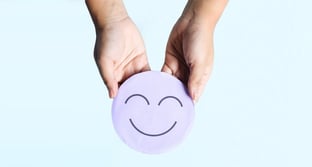
Top 12 Mental Health and Wellbeing Platforms for 2025
See the top mental health and wellbeing platforms for 2025. From guided meditation to mood tracking, get the best apps to support your employees' health.

How AI is Transforming eLearning
See how AI is transforming eLearning with personalized experiences, content, and predictive analytics, enhancing education for students and teachers alike.
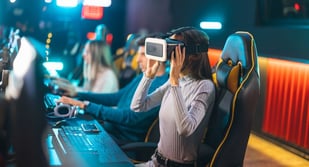
AI in Gaming: The Future of Artificial Intelligence in Game Development
The ultimate guide to AI in the gaming development industry. Learn how Artificial Intelligence is revolutionizing NPCs, game design, and player experiences.
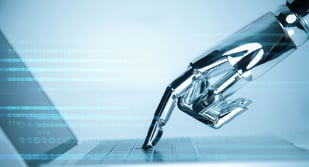
Phoenix Rising: AI-Powered Freelance Talent Discovery Takes Flight
Discover Phoenix: the AI-powered assistant revolutionizing freelance talent discovery. Connect faster, smarter, and more securely with top freelancers.

Revolution or Disruption? The impact of AI in Entertainment & Media
Revolution or disruption? Our comprehensive article explores the risks & benefits of AI in entertainment & media. Read key industry insights and opinions.
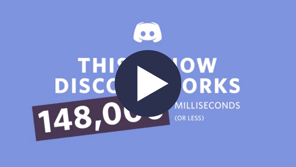
Top 10 Best Video Animation Agencies
This is an overview of our favorite and best animation agency choices. Check out animation examples of these top animation agencies in our top 10 list.

How to Manage Subject Matter Experts
Unlock the full potential of your projects with our expert guide on managing Subject Matter Experts. Learn strategies for effective collaboration.
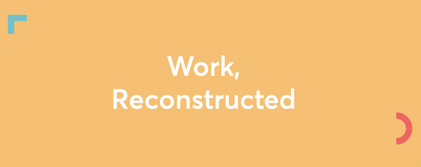
Work, Reconstructed
Xenios Thrasyvoulou and Glen Hodgson discusses the main compliance issues that are faced today within the talent and HR sectors.
